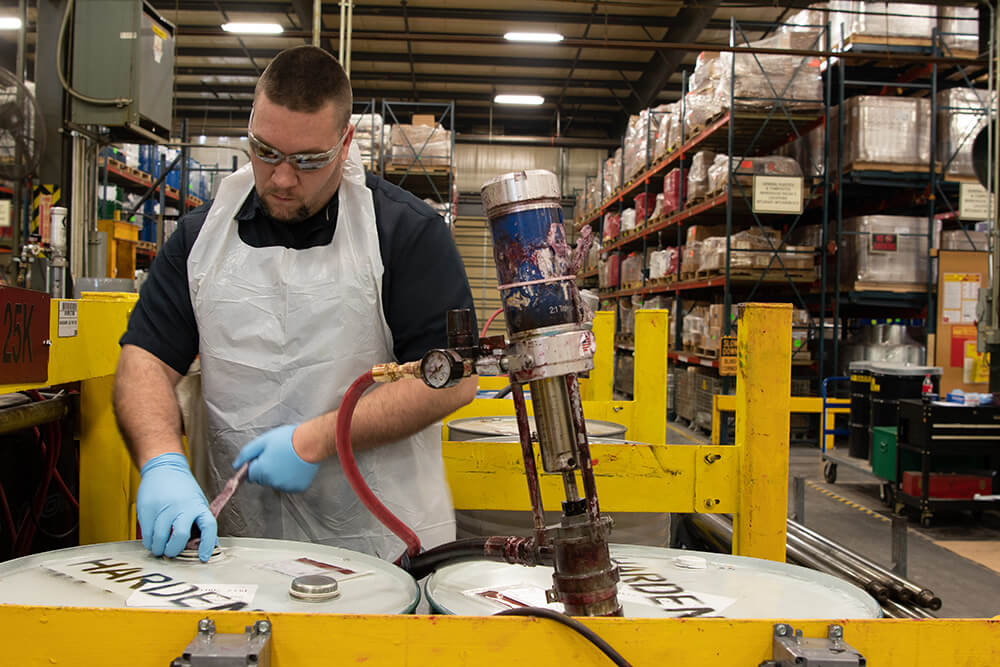Resources
Tech Sheets

Composites, elastomers and metals at General Plastics & Composites
Learn about engineered components and turnkey products and GP&C’s capabilities
GP&C Composite Facilities Overview
Centrally located in southeast Houston close to Hobby Airport, our custom-built facility has a total of 160,000 square feet designed specifically for effective workflow and includes a warehouse, manufacturing building and corporate office space. Here’s an overview of our Houston facility.GP&C Composite Machining Facility
Our extensive machining operation includes over 100 CNC machine tools, which enable us to meet our customer designs and specifications from simple parts and components to complex assemblies. We have 4- and 5-axis machines along with advanced technology like robotics and automation, and continually invest in equipment to advance our machining capabilities. Watch this video showing our Composite Machining FacilityGP&C Composite Filament Winding
Take a tour of our filament winding operations at our Houston manufacturing facility, narrated by GP&C Manufacturing Engineering Manager Nick Webster.GP&C Filament Winding Image Gallery
The knowledge and experience of GP&C’s materials science engineering group, design engineering group, and quality engineering group make us experts in filament winding and industry leaders in composites.GP&C Rubber Compounding
We make more than 40 rubber compounds in-house to any specifications. This enables GP&C to complete parts that require a combination of metal, rubber, and composites at our Haltom City facility. Check out this video on the process.GP&C Rubber Manufacturing
We specialize in elastomers and phenolic molded products and turnkey assemblies. Take a look at our 20,000 sq. ft. facility in Haltom City, Texas.Composites 101 For Industry
Composite materials provide long-term resistance to severe chemical and temperature environments commonly found in industrial applications.
Manufacturing composite materials requires an understanding of the unique conditions, design considerations, use of materials, performance, turn-around and delivery requirements for each application. Here are answers to commonly asked questions.
Composites are easily drillable, PDC friendly, non-conductive, non-magnetic and perform in environments up to 450° F and 30,000 PSI. Materials can be matched for specific downhole environments.
The most common types of composites are a result of combining reinforcing fibers with resin. Fibers can be a variety of items such as glass, Kevlar, carbon fiber, quartz, basalt or boron.
GP&C utilizes many different resin systems and cloth/roving combinations to meet each component or assemblies’ mechanical loading and environmental requirements.
Our engineers and technicians work jointly with customers early in the process, to develop prototypes, choose the best composite materials and manufacturing methods for construction, and coordinate and conduct in-house testing, assuring an innovative solution for your needs.
It is advantageous to involve our engineers early in the design phase for their expert guidance in using composite material for mechanical applications. Vital recommendations on the front-end will prevent time-consuming and costly changes at the back-end. They are experienced professionals with composite materials engineering backgrounds and are an excellent resource on customer projects.
Thermoset plastic is a polymer that irreversibly cures and cannot be reprocessed. A thermoplastic is a polymer that can be re-molded and re-processed.
Typically, precision ground shaped mandrel or diamond tooling is used to machine specific features.
The design will most likely change and is dependent on component geometry and mechanical strength requirements.
Composites pack a powerful one-two punch with their ability to be molded into complex shapes at a relatively low cost. This offers designers, engineers and architects a freedom not typically found with other competing materials. Because composites are a blend of reinforcing fibers, resins and additives, they can be manufactured to meet an array of requirements. Designers are free to create exciting new products and, in many cases, are only limited by their imagination.
Material strength depends on the manufacturing method, and reinforcement cloth weave/roving size and direction.
GP&C maintains strict confidentiality in all interactions with our customers or would-be customers. No analytical data, reports, opinions, discussions and other information are released to any third party without your permission.
Confidentiality is a very important aspect of our work at GPC, and our excellent reputation in the industry is a result of not only our product knowledge, expertise and service, but also of our high code of ethics.
Yes, confidentiality agreements will be signed upon request to our management.
It depends on the geometry. Typically, it is slightly more expensive, but costs can be controlled by using proper tooling.
